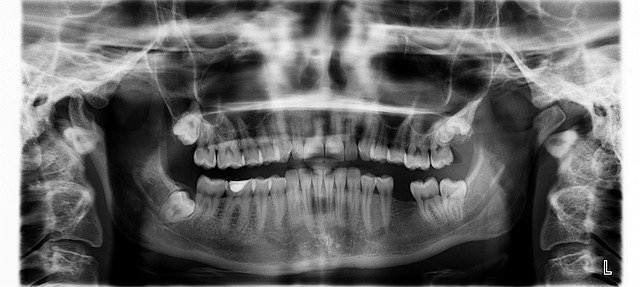Living with HIV in the USA: A Modern Guide to Treatment, Costs, and Support
Living with HIV in the United States has transformed dramatically over the past four decades. What was once considered a terminal diagnosis has evolved into a manageable chronic condition, thanks to groundbreaking medical advances, comprehensive support systems, and increased awareness. Today, individuals diagnosed with HIV can expect to live full, healthy lives with proper treatment and care.

What Are the Latest HIV Treatment Options?
Modern HIV treatment revolves around antiretroviral therapy (ART), which has revolutionized patient outcomes. Current treatment protocols focus on combination therapies that target the virus at multiple stages of its lifecycle. The latest medications include integrase strand transfer inhibitors (INSTIs) like dolutegravir and bictegravir, which offer improved efficacy and fewer side effects compared to earlier generations of drugs.
Single-tablet regimens have become increasingly popular, combining multiple medications into one daily pill. These formulations improve adherence rates and simplify treatment routines. Newer options include long-acting injectable medications administered monthly or every two months, providing alternatives for patients who struggle with daily oral medications or prefer less frequent dosing schedules.
How to Access Affordable HIV Care and Medication
Accessing affordable HIV care requires understanding the various programs and resources available across the United States. The Ryan White HIV/AIDS Program serves as the primary federal initiative, providing comprehensive services to low-income individuals living with HIV. This program covers medical care, medications, mental health services, and support services for those who are uninsured or underinsured.
State AIDS Drug Assistance Programs (ADAP) help eligible individuals access HIV medications at reduced costs. Many pharmaceutical companies also offer patient assistance programs that provide free or low-cost medications based on income eligibility. Additionally, federally qualified health centers (FQHCs) and community health centers often provide sliding-scale fee structures based on patients’ ability to pay.
Insurance marketplaces created under the Affordable Care Act have expanded coverage options, and many states have implemented Medicaid expansion programs that cover HIV treatment costs for qualifying individuals.
Understanding U=U: A Message of Hope and Empowerment
Undetectable equals Untransmittable (U=U) represents one of the most significant developments in HIV awareness and prevention. This scientifically-proven concept means that individuals with HIV who achieve and maintain an undetectable viral load through consistent treatment cannot sexually transmit the virus to others, even during unprotected sexual activity.
The U=U message has profound implications for reducing HIV-related stigma and improving quality of life for people living with HIV. It empowers individuals to pursue healthy relationships without fear of transmission and helps partners understand that adherence to treatment protects both their own health and their partners’ well-being. This breakthrough has transformed conversations about HIV prevention and relationship dynamics throughout communities nationwide.
Finding Comprehensive HIV Support Services
Comprehensive HIV care extends far beyond medical treatment to encompass mental health support, nutritional counseling, substance abuse treatment, and social services. Local AIDS service organizations (ASOs) provide crucial support through case management, peer support groups, and educational resources tailored to specific community needs.
Many areas offer specialized services including housing assistance, transportation programs, and employment support. Mental health services are particularly important, as individuals living with HIV may experience depression, anxiety, or trauma related to their diagnosis. Peer support programs connect newly diagnosed individuals with long-term survivors who can provide practical guidance and emotional support throughout the treatment journey.
Comparing HIV Care: Then vs. Now
The evolution of HIV care represents one of modern medicine’s greatest success stories. In the 1980s and early 1990s, HIV diagnosis often meant rapid progression to AIDS and death within months or years. Early medications were toxic, difficult to tolerate, and required complex dosing schedules with numerous daily pills.
Today’s treatment landscape offers dramatically improved outcomes. Modern medications are more effective, better tolerated, and often consolidated into single daily pills. Life expectancy for individuals diagnosed with HIV and receiving proper treatment now approaches that of the general population. The focus has shifted from managing a terminal illness to maintaining long-term health and preventing transmission.
| Treatment Aspect | 1980s-1990s | 2020s |
|---|---|---|
| Medication Regimen | 20+ pills daily | 1-2 pills daily |
| Life Expectancy | 1-2 years | Near normal lifespan |
| Side Effects | Severe, debilitating | Minimal, manageable |
| Treatment Cost | $10,000-15,000 annually | $20,000-40,000 annually |
| Transmission Risk | High even with treatment | Zero with undetectable status |
Prices, rates, or cost estimates mentioned in this article are based on the latest available information but may change over time. Independent research is advised before making financial decisions.
The transformation of HIV care represents hope for millions of Americans living with the virus today. While challenges remain, including addressing healthcare disparities and ensuring universal access to treatment, the current landscape offers unprecedented opportunities for individuals to live full, healthy lives. Continued advances in treatment options, prevention strategies, and support services promise even better outcomes for future generations. The key lies in early diagnosis, consistent medical care, and accessing the comprehensive support systems available throughout communities across the United States.
This article is for informational purposes only and should not be considered medical advice. Please consult a qualified healthcare professional for personalized guidance and treatment.




